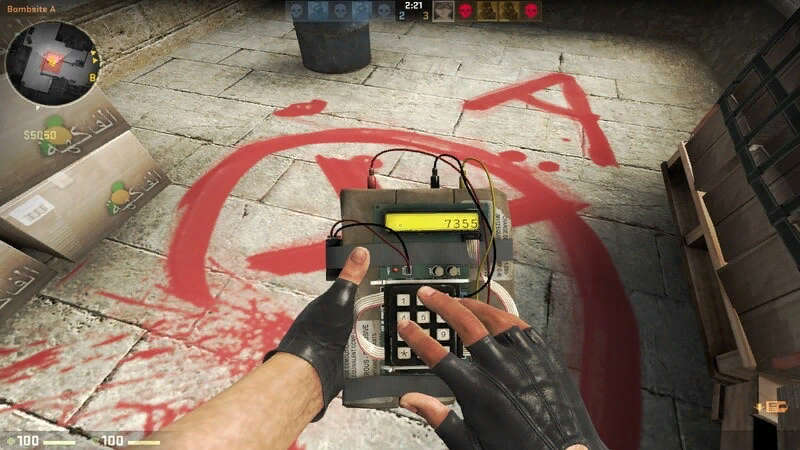Big Boss M5 Insights
Your source for the latest news and tips on technology and innovation.
Exploring the Unsung Heroes of CSGO Bomb Defusal Maps
Uncover the hidden strategies and tactics of CSGO's bomb defusal maps. Discover the unsung heroes that change the game!
The Subtle Brilliance of CSGO's Bomb Defusal Maps: A Tribute to Unsung Heroes
Counter-Strike: Global Offensive (CSGO) is renowned for its exhilarating gameplay and competitive scene, yet much of the spotlight often shines on the prominent characters and high-stakes matches. However, nestled within this captivating universe are the bomb defusal maps, the unsung heroes that lay the groundwork for tactical brilliance and team strategy. Each map, from the iconic Dust II to the tactical maze of Inferno, offers unique challenges and opportunities for players to showcase their skills. Understanding these maps is essential for players aspiring to master the game, as they serve not only as battlegrounds but as canvases for creativity and strategy.
The intricacies of each bomb defusal map deserve a closer look, as they shape the dynamics of gameplay in profound ways. For instance, the layout of Cache allows for clever rotations and ambushes, while the verticality of Overpass opens up myriad pathways for both attackers and defenders. Moreover, the psychological warfare that unfolds in these spaces is a testament to the creativity of map designers, who craft environments that challenge players to think on their feet. By paying homage to these vital arenas, we can appreciate the subtle brilliance of CSGO’s bomb defusal maps, recognizing them not just as locations, but as integral characters in the narrative of competitive gaming.

Counter-Strike is a popular team-based first-person shooter franchise that has captivated players since its inception. The latest installment, Counter-Strike 2, introduces new mechanics and graphics, enhancing the classic gameplay. Players often seek ways to customize their experience, and many engage in CS2 Skins Giveaway events to acquire unique weapon skins.
Behind the Scenes: How CSGO Bomb Defusal Maps Shape the Competitive Experience
In the realm of competitive gaming, particularly in CSGO, the design of bomb defusal maps plays a crucial role in shaping the overall player experience. These maps are not just battlegrounds; they are intricate environments that influence strategies, teamwork, and individual performance. The careful placement of choke points, open areas, and bomb sites encourages players to adapt their tactics based on the map's unique characteristics. For instance, maps like Dust II and Inferno have become iconic due to their strategic depth, with every corner and sightline offering opportunities and challenges that test a team's coordination and communication.
Moreover, the evolution of CSGO bomb defusal maps has also impacted the meta-game, leading to the development of specific strategies that define competitive play. As players learn the intricacies of these maps, they begin to formulate distinct approaches, including coordinated smokes and flashes, which can turn the tide of a match. The continual updates from Valve not only keep the maps fresh but also ensure that the competitive balance is maintained, pushing teams to innovate and enhance their gameplay. Ultimately, these maps serve as a canvas upon which high-level competition is painted, making their design and evolution vital to the CSGO competitive experience.
What Makes a Great Bomb Defusal Map? Exploring the Design Elements and Unsung Heroes
Creating a great bomb defusal map involves a multitude of design elements that work in harmony to enhance gameplay. First and foremost, the layout is crucial; it should offer both attackers and defenders strategic opportunities to outmaneuver each other. An ideal map features a balanced combination of open spaces and tight corners, allowing for tactical engagements that require teamwork and skill. Additionally, clear sightlines and choke points can facilitate exciting encounters, while well-placed cover offers players the chance to utilize their surroundings effectively. Furthermore, the environment should be engaging and immersive, drawing players into the game world while maintaining practical gameplay features.
Another often underestimated aspect of map design is the inclusion of unsung heroes, such as ambient sounds, visual cues, and thematic elements that enhance player immersion. These elements can provide crucial information to players, such as indicating the presence of a bomb or hinting at potential enemy approaches. By integrating interactive objects and meaningful surroundings, designers can create a more dynamic and engaging experience. As players explore these maps, they should feel a connection not only to the gameplay but also to the narrative that the environment conveys, making each round on these maps a unique and memorable experience.